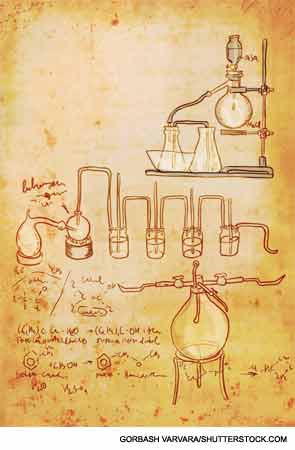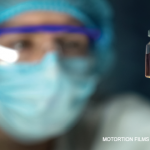
It is difficult to realize that in 1948, when I was finishing an internal medicine residency and service in the Army Air Corps and was ready for advanced training, there was no such field as rheumatology—even the word did not exist. That changed in 1949 when, at a monumental meeting of the American Rheumatism Association at the Waldorf-Astoria Hotel in New York (there were fewer than 400 members), Philip Hench delivered his seminal paper on the effect of Compound E (cortisone) on rheumatoid arthritis. I was there and joined the entire audience in a standing ovation. It was one of medicine’s turning points, and I was hooked. “Rheumatology” was born, and I became the first ever fellow in rheumatology at the Columbia-Presbyterian Medical Center in New York.
Robert Loeb, chairman of medicine, although somewhat skeptical, assigned a bright young member of his department to be my mentor, and I lucked out. He was Charlie Ragan, who became one of the pillars in our field. By the time I had finished training with him, I had written several papers, including my first Citation Classic—“The Natural History of Cushing’s Syndrome,”—which warned about the newly discovered hazards of steroid use.
There were a few other pockets of arthritis investigation in the United States—Walter Bauer at Harvard, Dick Freyberg at Michigan, Joe Hollander in Philadelphia, Charley Smyth in Denver, Currier McEwen at NYU (the spawning ground for Joe Bunim and Morris Ziff), and Hench at the Mayo Clinic. Some clinicians, including Ralph Boots and Russell Cecil, began to specialize in the management of arthritis and rheumatism. Boots was a big promoter of the use of gold, while Cecil favored the use of Scotch whiskey. Alexander Gutman emerged as an authority on gout, and when he left Columbia in 1951 to become the chairman of medicine at Mount Sinai, he asked me to come along.
Expanding Rheumatology in the Clinic and the Lab
My first task at Mount Sinai was to establish an Arthritis Clinic, but there were no trained rheumatologists to staff it. Fortunately, in New York, there were a number of very smart and able clinicians, several of whom I was able to recruit. These included Adolph Weissman, father of Gerald Weissman, who achieved great fame in our field; Joseph Pincus, whose son, Ted, is still a leader in our field; Maurice Wolf; and Selvan Davison. A later addition was the formidable Harry Spiera, who eventually succeeded me as division head when I chose to return to Brooklyn as chief at the newly established State University of New York (SUNY) Downstate.
The clinicians I had recruited were doing an excellent job, and so I could return to my first love—the laboratory. Those were the days before molecular medicine. It was hands-on, trial-and-error and intuition. Much depended on the talent of the laboratory assistant. (Morris Ziff got his start this way before going to medical school.) I was lucky enough to hire a young Israeli woman, Fela Polishuk, whose husband had accepted a two-year obstetrics and gynecology fellowship in New York. Thus, I was able to return to my study of the rheumatoid factor (RF). The test for RF began with the streptococcal agglutination reaction, which depended on the use of virulent organisms, and thus was not easily nor widely performed. However, in 1946, shortly after the end of the war, there was an epidemic of rickettsial pox in the borough of Queens, New York. Patients were subject to myriad tests. Among these was the sensitized sheep-cell agglutination reaction, which depended on the use of antibodies from a horse that had been injected with sheep blood. The horse serum was then coated on fresh sheep erythrocytes and tested with patient’s serum (using uncoated red blood cells as controls). It turned out that this test was was negative in all of the rickettsial-pox patients except for one. The one exception was a young woman named Elizabeth Pearce, who was a technician in the lab of Harry Rose, the chief of microbiology at Columbia University in New York. A bright and curious person, Pearce, who was performing the tests, wondered why she tested positive. Perhaps, she reasoned, it was because she had rheumatoid arthritis. Harry Rose, along with Charles Ragan, observed that over 50% of RA patients tested positive. It was this unexpected observation that interested me when I became first fellow and I devoted my laboratory time at Mount Sinai to the study of rheumatoid factor.
An interesting side note: Rose, Ragan, Olmsted, and Pearce reported their findings in 1948. Years later, it was discovered that, in 1940, Erik Waaler of Norway had reported similar results using sensitized sheep cells. While Rose and Ragan quickly acknowledged this, years later, while attending a festschrift for Waaler in Bergen, Norway, it was clear that he believed that Rose had “stolen” his work.
Horses, Sheep, and Paint
In my lab at Mount Sinai, I thought long and hard about rheumatoid factor. Medical thinking at the time was heavily influenced by the concept that the body was not capable of developing antibodies against itself—anti-antibodies—or what we now think of as autoantibodies. Many excellent immunologists believed they didn’t exist. I discussed this concept with the best immunologist I knew, my friend Henry Kunkel at the Rockefeller Institute, and he encouraged me to find a way to prove it. At the same time, my wife was trying to dissuade me from continuing my study of the sensitized sheep-cell test since it required that I travel to a farm, bleed a sheep, inject the blood into a reluctant horse, and return six weeks later to bleed an even more reluctant horse to procure the horse anti–sheep-cell antibodies. Then, the serum had to be separated, more sheep had to be bled, and then “sensitized” to the horse serum. There had to be an easier way.
At this time, Polishuk returned to Israel, but sent me her friend Jacques Singer, a talented bacteriologist, to be my fellow and collaborator. Jacques learned to speak English during our long discussions about laboratory work, and this activity helped clarify my thinking. What exactly were “sensitized” sheep cells? They were erythrocytes coated with antibody so that they could detect a possible antigen in a patient’s serum. What were antibodies, I thought? They are all gamma globulin or Fraction 2. Why not try using the gamma globulin of other species to coat the sheep cells? We did, and the test worked well. Then came a crucial step. Why not try human Fraction 2, which was readily available since it was being used by the Red Cross in those pre-Salk polio-fighting days. Success! At last we had eliminated the reluctant horse!
Now we wanted to eliminate the sheep, since neither Singer nor I enjoyed the bleeding process and we wanted to avoid introducing foreign organic material. So we tried by substituting one biologically inert particle after another. The most promising were collodion particles, but they were too unstable and the results could not be duplicated. At this point, American industry came to our rescue. Water-based latex paints became widely substituted for oil paints. What were latex-based paints? They were simply easily manufactured latex particles that were dyed and suspended in water. I contacted the major manufacturer, the Dow Chemical Company in Michigan. They sent us various sizes of latex particles, and we eventually found that particles measuring 0.9 micron in diameter could be coated with Fraction 2 and easily detect rheumatoid factor. The latex fixation test was born (another Citation Classic paper). This was most satisfying, since I confirmed the existence of rheumatoid factor as an anti-antibody, or autoantibody.
The simplicity of the latex-fixation technique was soon readily applied to the detection of antibodies in general and promoted the development of immunology as a science.
Word spread rapidly, and I was invited to speak in many countries. I met with the world leaders in rheumatology including such major figures as Forestier and Coste in France, Bywaters in England, Michotte in Belgium, Nana Svartz in Stockholm, and many others. I am now an honorary member of a dozen foreign medical societies, and the ACR honored me with its Presidential Gold Medal.
The word “rheumatology” and its derivative “rheumatologist” both started in 1949. So did I. Alas, I have aged, but the field of rheumatology has flourished and continues to grow. I am happy to have been involved in its earliest years and look forward to exciting new developments.
Dr. Plotz is emeritus professor of medicine at SUNY Downstate in Brooklyn, N.Y.

